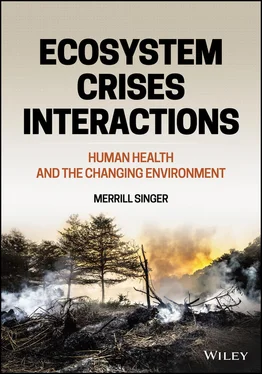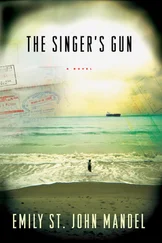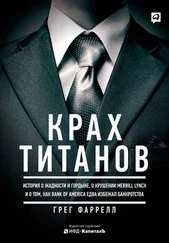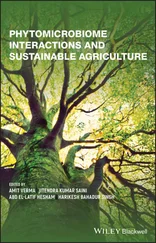On the one hand, there is knowledge that is inherited from generation to generation and is generally shared by most of the members of the society. This cultural information is often passed on as folk wisdom in the context of folktales or is preserved and transmitted in the context of rituals and various religious ceremonies. The second category includes information gained through individual experience‐empirical observations made by individual[s] … during the course of [life] activities. The two categories of indigenous knowledge are not mutually exclusive. Information collected by an individual may become knowledge that is shared by members of the group through time.
There is then in cultural environmental knowledge an ongoing flow of information between individuals in a social group, some of which over time is inscribed into the cultural repertoire of the group and is transmitted to new generations as agreed upon reality. It should be stressed that not all knowledge in a group is equally or fully shared, as there may be some that is mostly retained by subgroups (e.g., traditional healers, mothers) within the wider society (e.g., knowledge about plants used to make traditional medicines, how to prepare them, and where they can be found). Moreover, traditional knowledge about the environment may contain entities not recognized by outsiders, such as spiritual beings and sacred places.
Human knowledge of the environment is conditioned by language and the ability to have complex thoughts entwined with memories, values, and cultural norms. Consequently, environmental perceptions are filtered through cultural perceptions. This point is emphasized by Vayda & Rappaport (1968) in the distinction they draw between the “operational environment,” which they define as the sum total of all environmental features, whether or not they are locally comprehended, and the “cognized environment,” which is the environment as it is perceived and understood within a social group. Notably, some features of an operational environment may affect a group even if its members are unaware of their existence (e.g., pathogens, disease vectors, climate change). Because of cultural filtering, people of different cultural backgrounds can view the same operational environment differently.
The study of indigenous environmental knowledge has a long history. One of the earliest efforts was conducted by Carl Linnaeus, the renowned 18th‐century Swedish botanist, zoologist, and physician, and the creator of the binomial system we still use to give species their Latin names (e.g., Homo sapiens ). While in his mid‐20s, Linnaeus undertook a field study of the indigenous Sami of northern Sweden. The primary motivations for his six‐month foray by foot, boat, and horseback to the northernmost Swedish province of Lapland were to discover new plants and animals and, if possible, find valuable minerals like silver, copper, and iron. At the same time, he was curious about the lifestyle and customs of the native Sami people, a reindeer‐herding society of semi‐nomads who traditionally followed their livestock across the tundra‐covered areas of Sweden, Norway, Finland, and Russia in search of available grazing foods like mosses and lichen. Based on his journey, Linnaeus described about 100 formerly unidentified plants and wrote about them in his book, Flora Lapponica (Frängsmyr et al . 1983). In his grant application to the Royal Scientific Society, he described his interest in studying the plants of Lapland but additionally, if vaguely, noted that he also hoped to learn about the plant‐based home remedies used by the Sami and what kinds of food they resorted to in times of scarcity. In fact, Linnaeus had numerous questions he hoped to answer about the Sami, including ones concerning their common foods and means of food acquisition, material culture (including housing, clothing, and handicraft), and belief system.
In the early days of his expedition, Linnaeus met a schoolteacher, Per Fjellström, who had learned the Sami language and gave him a long list of Sami names for plants, mammals, birds, and fish, a clear indicator that the Sami were quite acquainted with the other species with which they shared their environment, garnered from their past and ongoing empirical observations. Based on his time among them, Linnaeus was able to describe elements of the technologies the Sami constructed from their environment and used to survive in it. His writings provided systematic information about their sewn boats (used in fishing by forest‐dwelling communities), their clothing, some of the traps they used to catch squirrels and forest birds, the harnesses they used with their reindeer when traveling with sledges, and their huts, tents, and storage structures. Moreover,
he had ample opportunity to study the reindeer. He saw whole herds; saw how scared the animals were of the gadfly and what these insects did to their skins. He saw the milking of reindeer cows and the castration of bulls and watched one or two slaughterings … He also noted down different Sami words to denote the reindeer according to their age. He [also] got information about the tanning of leather [using tree bark].
(Zorgdrager 2008, p. 62)
While not a rigorous ethnography by today’s standards, Linnaeus’ account of the ecology of the Sami suggests both Sami ken awareness of their surroundings and their diverse interactions with the biotic and abiotic components therein. Lacking, however, is a textured holistic picture of Sami understanding of their world and its biotic and abiotic makeup; that is, their indigenous, norm‐ and value‐laden map of reality.
The earliest (and most of the subsequent) systematic research on indigenous environmental knowledge was conducted by anthropologists. This occurred because of the turn toward a field‐based orientation in the disciple. Anthropologists began adopting an extended fieldwork approach in the early 20th century. This development is generally credited to the Polish anthropologist Bronislaw Malinowski, who advocated that to understand another society it was necessary to live among its people in their traditional setting, learn their language, engage them in constant dialogue and increasingly informed interviewing, and participate to the degree possible in their everyday activities. While other anthropologists had spent time in the field before him, as Wax (1972, p. 3) asserts, Malinowski’s research among the Trobriand Islanders of the western Pacific during the years 1916–1918 “yielded a series of epochal volumes which revolutionized the content and practice of anthropology.”
As part of this transition, anthropologists came to distinguish inside and outsider viewpoints, labeling them the emic and etic points of view, respectively. These terms were introduced by the linguist Pike (1967), who derived them from the suffixes of the linguistic concepts “phonemic” and “phonetic,” the former referring to any sound unit of significance in a particular language and the latter to the system of notations scholars use to represent these vocal sounds (McCutcheon 1999). An earlier but related advance by anthropology was the embrace of cultural relativism as a foundational axiom. This is the idea that the beliefs, values, norms, and behaviors of the people anthropologists study in the field should be understood in terms of their own culture, rather than be judged against criteria developed by another, different culture—a position often attributed to the writings of Franz Boaz (1887).
Concerned with understanding the emic perspective, and aware of the critical role of language in this endeavor, some anthropologists began to inquire about indigenous labeling and classification of plants and animals in the local environment, and discovered extensive assemblages of environment knowledge among indigenous people. Exemplary is the work of the British/Australian social anthropologist Ralph Bulmer. Based on his ethnographic research among the Karam, a horticultural tribe living in Kaironk Valley in highland New Guinea, Bulmer (1974, p. 12) found “a vast knowledge concerning the integration of the plant and animal communities—of the topographic, soil and climatic conditions required by wild as well as cultivated plants, of the kinds of plants and their parts which provide food or refuge for different kinds of animals, of which animals prey upon which other animals, of the role of birds and mammals in the propagation and dispersal of certain plants.” Similarly, the American anthropologist Douglas Oliver (1989, pp. 275–276), writing in detail about the food and food‐getting activities of indigenous island‐dwellers in the Pacific, concluded that:
Читать дальше
